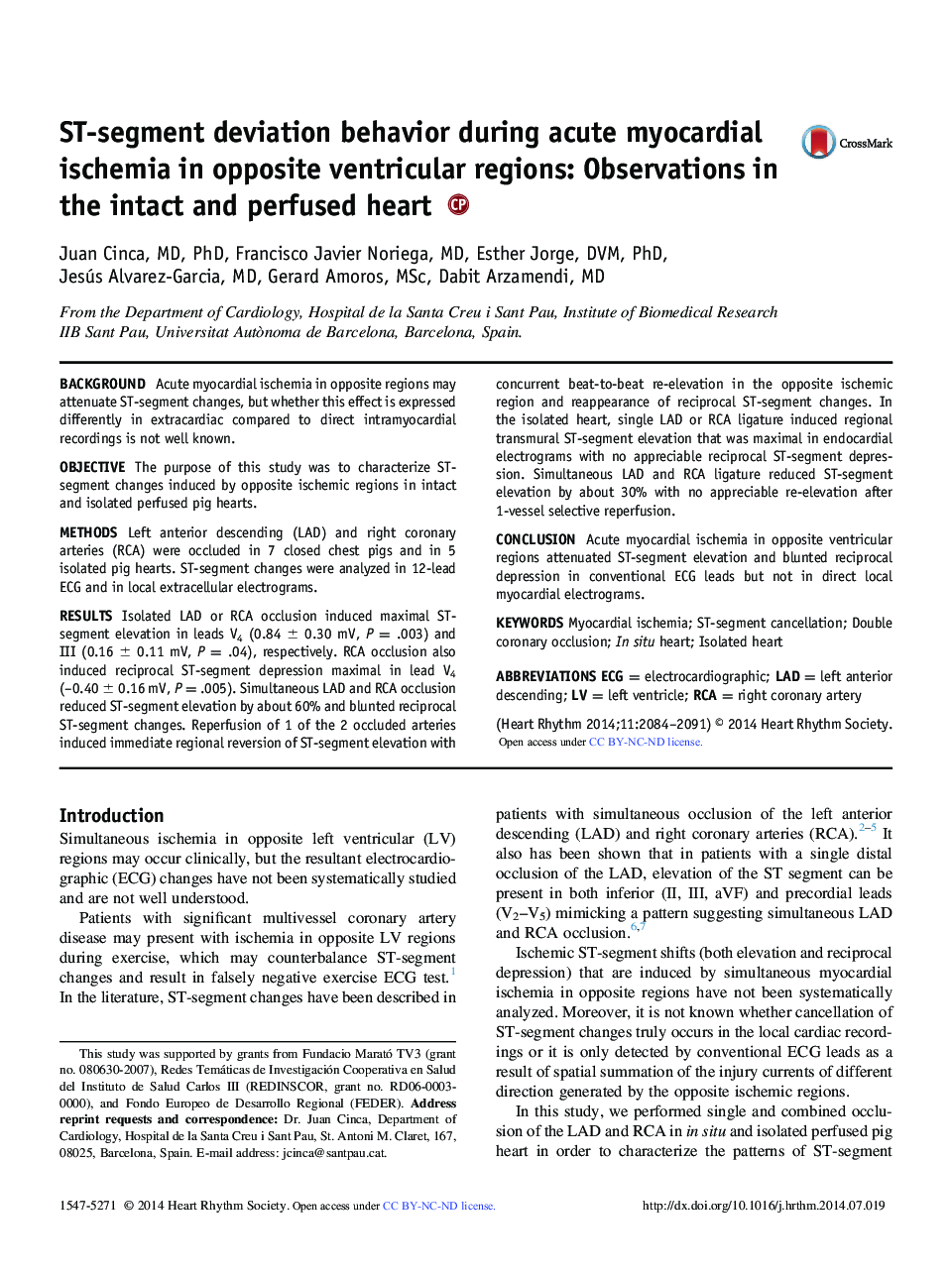| Article ID | Journal | Published Year | Pages | File Type |
|---|---|---|---|---|
| 5960628 | Heart Rhythm | 2014 | 8 Pages |
BackgroundAcute myocardial ischemia in opposite regions may attenuate ST-segment changes, but whether this effect is expressed differently in extracardiac compared to direct intramyocardial recordings is not well known.ObjectiveThe purpose of this study was to characterize ST-segment changes induced by opposite ischemic regions in intact and isolated perfused pig hearts.MethodsLeft anterior descending (LAD) and right coronary arteries (RCA) were occluded in 7 closed chest pigs and in 5 isolated pig hearts. ST-segment changes were analyzed in 12-lead ECG and in local extracellular electrograms.ResultsIsolated LAD or RCA occlusion induced maximal ST-segment elevation in leads V4 (0.84 ± 0.30 mV, P = .003) and III (0.16 ± 0.11 mV, P = .04), respectively. RCA occlusion also induced reciprocal ST-segment depression maximal in lead V4 (-0.40 ± 0.16 mV, P = .005). Simultaneous LAD and RCA occlusion reduced ST-segment elevation by about 60% and blunted reciprocal ST-segment changes. Reperfusion of 1 of the 2 occluded arteries induced immediate regional reversion of ST-segment elevation with concurrent beat-to-beat re-elevation in the opposite ischemic region and reappearance of reciprocal ST-segment changes. In the isolated heart, single LAD or RCA ligature induced regional transmural ST-segment elevation that was maximal in endocardial electrograms with no appreciable reciprocal ST-segment depression. Simultaneous LAD and RCA ligature reduced ST-segment elevation by about 30% with no appreciable re-elevation after 1-vessel selective reperfusion.ConclusionAcute myocardial ischemia in opposite ventricular regions attenuated ST-segment elevation and blunted reciprocal depression in conventional ECG leads but not in direct local myocardial electrograms.
